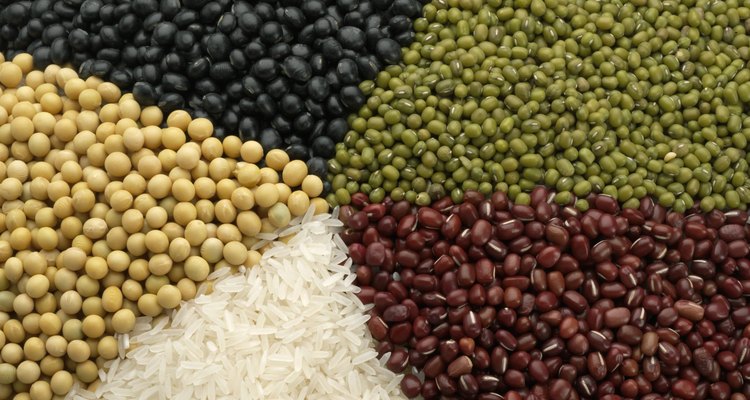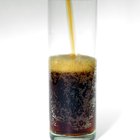
Pectin, which is often added to yogurt, is found in the cell walls of plants. Lemons, limes, oranges and grapefruits are common sources of pectin used in yogurt products. Pectin improves the taste and texture of yogurt by serving as a stabilizer and gelling agent and increasing the shelf life of yogurt drinks.
Gelling Agent
The primary use of pectin in the food production industry is as a gelling agent. Elevated temperatures are used when making yogurt, and when that heat is applied to pectin, the ester groups of the pectin molecules stick together in a gel network. Pectin forms bonds with water, giving yogurt its softness, and it bonds with itself, giving yogurt its strength. Pectin in yogurt provides the stability that is characteristic of jellies and jams.
Shelf Life

Pectin is used in yogurt drinks to preserve the acidity of the products and to increase their shelf life. Pectin molecules that carry a negative charge bind to proteins carrying a positive charge. This prevents the proteins from coagulating when heated. Pectins in yogurt drinks prevent the milk proteins from curdling during ultra high temperature pasteurization, which extends shelf life.
Reduced Fat Yogurt

Pectin is often added to yogurt to achieve a thicker consistency. This is especially common in low fat or fat free varieties. When the fat is omitted in yogurt preparation, the result can be a thin, runny product. Pectin creates a thicker, more palatable product in the absence of fat.
Reduced Sugar Yogurt
Since pectin provides no calories, it is useful in manufacturing lower calorie yogurts.The esterification, or the percentage of ester groups in the molecule, of pectin determines its properties in a food product. Low methoxyl ester pectins can be used in diet yogurt varieties and the fruit preparations for yogurt because they can gel in the presence of a small amount of sugar. Pectin does not impact the taste of the final yogurt product.
Digestive Benefit

According to the American Dietetic Association, pectin is classified as a functional fiber and can provide health benefits as a source of soluble fiber. It is a non-starch polysaccharide extracted from citrus products and can be sold as a fine powder or liquid. According to the "Handbook of Dietary Fiber in Human Nutrition" by J.H. Cummings, a meta-analysis of 11 studies measuring fecal weight found that pectin increases fecal weight by 1.2 grams per gram of pectin eaten. Fiber intake in this study, such as from pectin, was significantly related to stool weight, and stool weight was inversely related to colon cancer risk. Factors that contribute to the increase in fecal weight are the presence of the fiber eaten, the water absorbed by the fiber and bacteria produced by the fermentation of the fiber. Additionally, the longer the stool is held in the large intestine, the more water will be absorbed. Added fiber tends to normalize defecation regularity and speed up intestinal transit time. The water that is held by fiber is less likely to be reabsorbed by the colon, due to its quick passage through the intestine.
Related Articles

What Are the Ingredients in Yoplait ...

Dates & Yogurt Diet
Nutrition Information for Onken Yogurt

What Foods Provide Calcium D-Glucarate?

Can You Substitute Yogurt for ...

Is There Glucose in Soda?

Calories in Peppermint Extract

Can You Bake Greek Yogurt?

Ingredients in Restylane

How to Make Liquid Sugar Concentrate

Does Benefiber Lower Cholesterol?

What Is Balkan Yogurt?

Preservatives in Campbell's Soups

What Is Certo Used For?

Baking With Juice Concentrates

The Amount of Lactose in Yogurt

What Type of Sugar Is in Fruit?

The Ingredients of Neutrogena Sensitive ...

Why Does Greek Yogurt Have More Protein ...

Cooking Yogurt Without Curdling It
References
- “CRC Handbook of Dietary Fiber in Human Nutrition”; Cummings JH; 1993
Writer Bio
Melanie Di Stante is a registered dietitian and a NCBDE-certified diabetes educator with more than 10 years of experience. She received a bachelor's degree in dietetics from the University of Connecticut and a master's degree in human nutrition from the City University of New York. Di Stante has been writing professionally for more than 10 years, contributing to local newspapers and "Today's Dietitian."
Photo Credits
Jupiterimages/Pixland/Getty Images